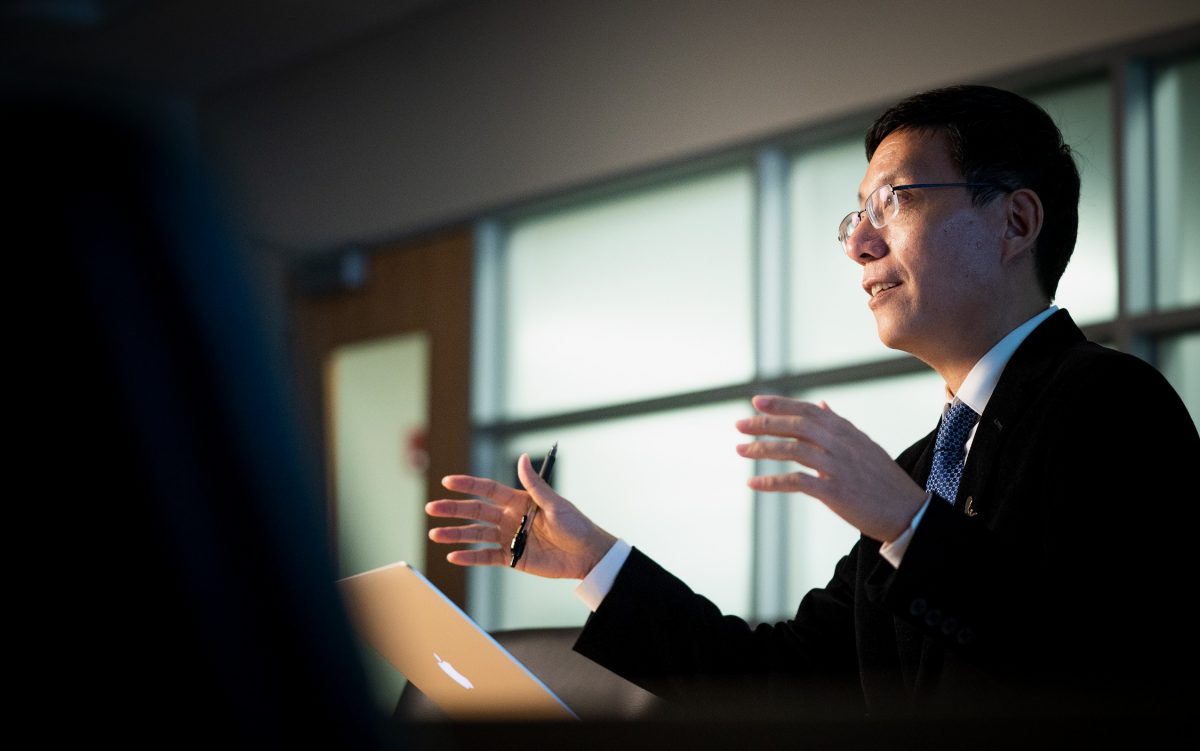
Senior corresponding author, Zhaoming Wang, Ph.D., St. Jude Department of Epidemiology and Cancer Control
The population of childhood cancer survivors in the U.S. is increasing, with an overall childhood cancer survival rate of 85% five years after diagnosis. However, survivors are still at increased risk of various health conditions, including second cancers. Using data from the Childhood Cancer Survivor Study (CCSS) and the St. Jude Lifetime Cohort Study (St. Jude LIFE), scientists at St. Jude Children's Research Hospital have identified a genetic explanation for why a small proportion of survivors are more likely to develop second cancers and why they may be more severe or deadly. The findings, which will inform genetic counseling, potential clinical genetic testing and adoption of appropriate cancer screening and prevention strategies, were published today in The Lancet Oncology.
The St. Jude group showed that survivors with genetic variants in specific genes called cancer-predisposing variants are at an increased risk of developing second cancers as adults, and those cancers are more likely to be severe and deadly. The scientists had previously identified that survivors with pathogenic variants in one of these 60 cancer predisposition genes or 127 DNA damage repair genes were more likely to experience a second cancer. The current study builds on these findings to show a direct connection between cancer predisposition variants and increased second-cancer-related mortality.
Many of these genetic variants are known to be causally linked to cancer. For example, the tumor suppressor gene TP53 is the most commonly mutated gene in human cancers, is one of the 60 genes in the analysis. The key to the discovery's utility is that these variants are present in the DNA of patients when diagnosed with cancer as children, allowing for a personalized medicine approach to be developed early in life for each survivor. By better understanding the effect such genes can have on future cancer risk and outcomes beyond the primary childhood cancer, the study will help inform efforts to prevent second cancer and improve the outcomes in these individuals.
"Our study pinpoints that clinical genetic testing to screen for and identify if survivors are carriers of these pathogenic variants could lead to early interventions for those at higher risk to develop deadly second cancers, potentially saving their lives," said senior corresponding author Zhaoming Wang, Ph.D., St. Jude Department of Epidemiology and Cancer Control.
Cancer prevention in adult childhood cancer survivors
The total number of childhood cancer survivors who develop second cancers is small (less than 10% based on current research), and the percentage of survivors who carry these cancer-predisposing variants is low (approximately 6%), which has made it extremely challenging to study and understand the genetic risks for second cancer and its outcome in this population. To reach statistically meaningful results, Wang and his collaborators combined whole genome and exome sequencing and clinical data from over twelve thousand survivors. The study combined data from North America's two largest survivorship studies, the CCSS and St. Jude LIFE cohorts.
"This is the first comprehensive study looking for the genetic reason for late mortality, specifically late mortality due to second cancers," Wang said. "Now we know that cancer-predisposing variants contribute to the risk of death from second cancer."
Increased surveillance may help limit the impact of these cancer-predisposing variants as childhood cancer survivors grow into adulthood. By knowing which survivors are at greater risk, health care providers may be able to recommend intensified cancer screening, which may lead to the detection of second cancers earlier with better outcomes.
These variants are part of the inherited, or germline, DNA that people are born with. This means they can be detected in children when they are first diagnosed with childhood cancers, arming survivors with the knowledge they need to lower their risk later in life.
"Even before finishing childhood cancer treatment, clinicians can recommend a referral to genetic counseling so that survivors with these variants can seek cancer prevention strategies later on," Wang said. "Depending on the gene harboring the variant, survivors who are carriers may be able to implement prevention strategies to safeguard their long-term health."
While the study does indicate patients with these cancer-predisposing variants are at an increased risk of second cancers, they can choose to avoid risky behaviors such as smoking and drinking, as well as attend regular screening, to give themselves the best chance to still live long lives.
Authors and funding
The study's co-first authors are Cheng Chen, of Shanghai Jiao Tong University School of Medicine; Na Qin, of Nanjing Medical University and Mingjuan Wang, of St. Jude. The other corresponding authors are Hui Wang, Shanghai Jiao Tong University School of Medicine; Deo Kumar Srivastava and Leslie L. Robison, St. Jude. The study's other authors are Qian Dong, Saima Sultana Tithi, Yawei Hui, Wenan Chen, Gang Wu, Dennis Kennetz, Michael Edmonson, Michael Rusch, Andrew Thrasher, John Easton, Heather Mulder, Noel-Marie Plonski, Kyla Shelton, Matthew Ehrhardt, Kim Nichols, Yutaka Yasui, Gregory Armstrong, Kirsten Ness, Melissa Hudson and Jinghui Zhang, St. Jude; Nan Song, Chungbuk National University; Cindy Im, University of Minnesota; Wendy Leisenring and Kayla Stratton, Fred Hutchinson Cancer Research Center; Rebecca Howell, The University of Texas MD Anderson Cancer Center; Smita Bhatia, University of Alabama at Birmingham.
The study was supported by grants from the National Institutes of Health (CA195547, CA55727 and CA021765) and ALSAC, the fundraising and awareness organization of St. Jude.
Read the full text of the Lancet Oncology article:
Lancet Oncology, published October 2, 2023






